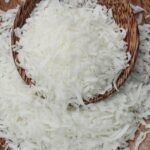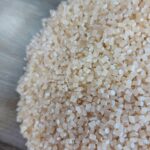CASHEW NUT SHELL OIL
In today’s competitive and health-conscious food industry, pasta production has evolved significantly. Consumers are demanding healthier, more sustainable, and better-quality products, and the industry has had to adapt quickly to meet these demands. One of the revolutionary ingredients making waves in the pasta industry is resistant tapioca starch. Derived from the cassava plant, resistant tapioca starch offers unique properties that solve some of the most pressing challenges faced by pasta manufacturers. Below, we explore three key challenges in pasta production and how resistant tapioca starch provides solutions to each.

Table of Contents
Toggle1. Improving Texture and Cooking Stability
One of the primary concerns in pasta production is ensuring that the final product has the right texture and cooking stability. Pasta that turns mushy, falls apart, or loses its shape after cooking can result in consumer dissatisfaction, leading to a negative impact on brand reputation. This is particularly a problem with gluten-free and high-fiber pastas, which tend to have weaker structural integrity compared to traditional wheat-based pasta.
Solution: Resistant Tapioca Starch
Resistant tapioca starch improves the texture and structure of pasta in several ways. Its ability to form a gel during the cooking process helps pasta retain its shape and firmness. This is especially beneficial for gluten-free pasta, where the absence of gluten weakens the dough. Tapioca starch mimics gluten’s properties by providing the necessary binding and elasticity. Additionally, resistant tapioca starch exhibits excellent water-binding properties, ensuring that pasta doesn’t become overly soft or gummy when cooked. It also helps maintain an ideal “al dente” texture, which is a critical factor for consumer satisfaction.
For manufacturers, this means fewer complaints and returns due to poor cooking performance, contributing to a better overall product experience.
2. Enhancing Nutritional Profile without Compromising Quality
Another significant challenge in modern pasta production is meeting the growing consumer demand for healthier food options. With more people focusing on diets rich in fiber and resistant starches for digestive health and weight management, the need for nutritious pasta is more pronounced than ever. Traditional pasta, often made from refined wheat, lacks the fiber content required to meet these consumer demands.
Solution: Resistant Tapioca Starch
Resistant tapioca starch is a type of starch that resists digestion in the small intestine, functioning as dietary fiber. This feature allows it to improve the nutritional profile of pasta without impacting the taste or quality of the product. By incorporating resistant tapioca starch into pasta formulations, manufacturers can increase the fiber content, offering a more healthful alternative to conventional pasta. Resistant starch also has a lower glycemic index, which helps in moderating blood sugar levels — a significant selling point for health-conscious consumers.
Moreover, unlike some fiber additives, resistant tapioca starch does not negatively affect the mouthfeel or taste of the pasta. It integrates seamlessly into the pasta matrix, maintaining a smooth and consistent texture. This allows manufacturers to promote the health benefits of their product without compromising on taste or quality, keeping consumers happy and loyal to the brand.
3. Adapting to Gluten-Free and Allergen-Free Market Demands
The demand for gluten-free pasta has skyrocketed in recent years due to the rise in awareness of celiac disease and gluten intolerance. Additionally, there is growing interest in allergen-free and plant-based foods, putting pressure on pasta manufacturers to diversify their product offerings. However, creating gluten-free pasta that mimics the taste and texture of traditional pasta is a significant challenge. Gluten plays a critical role in providing elasticity, structure, and texture to pasta, and finding an alternative that replicates these properties is not easy.
Solution: Resistant Tapioca Starch
Resistant tapioca starch serves as an ideal solution for gluten-free pasta production. Its unique binding properties help mimic the elasticity and structure that gluten provides, resulting in a final product that closely resembles traditional wheat-based pasta in texture and mouthfeel. Moreover, it’s allergen-free, making it a safe choice for consumers with multiple food sensitivities.
Another advantage of resistant tapioca starch is its neutral taste, which doesn’t interfere with the flavor profile of the pasta. This is critical when producing specialty pastas, such as those flavored with herbs, spices, or other ingredients. Pasta made with resistant tapioca starch allows manufacturers to maintain the desired flavor balance without introducing off-tastes or textural issues.
In the highly competitive gluten-free market, resistant tapioca starch enables manufacturers to meet consumer expectations by providing a high-quality product that doesn’t sacrifice taste or texture, ultimately boosting their position in the market.

Conclusion
As the pasta industry continues to innovate and adapt to new consumer trends, resistant tapioca starch has emerged as a critical ingredient that addresses several major production challenges. From improving texture and cooking stability to enhancing the nutritional profile and facilitating gluten-free production, resistant tapioca starch offers a versatile solution that benefits both manufacturers and consumers.
By incorporating resistant tapioca starch into their pasta formulations, manufacturers can ensure that their products meet the highest standards of quality, health, and taste. The result is a more competitive product that resonates with today’s health-conscious and discerning consumers, ensuring long-term success in an ever-evolving market.












